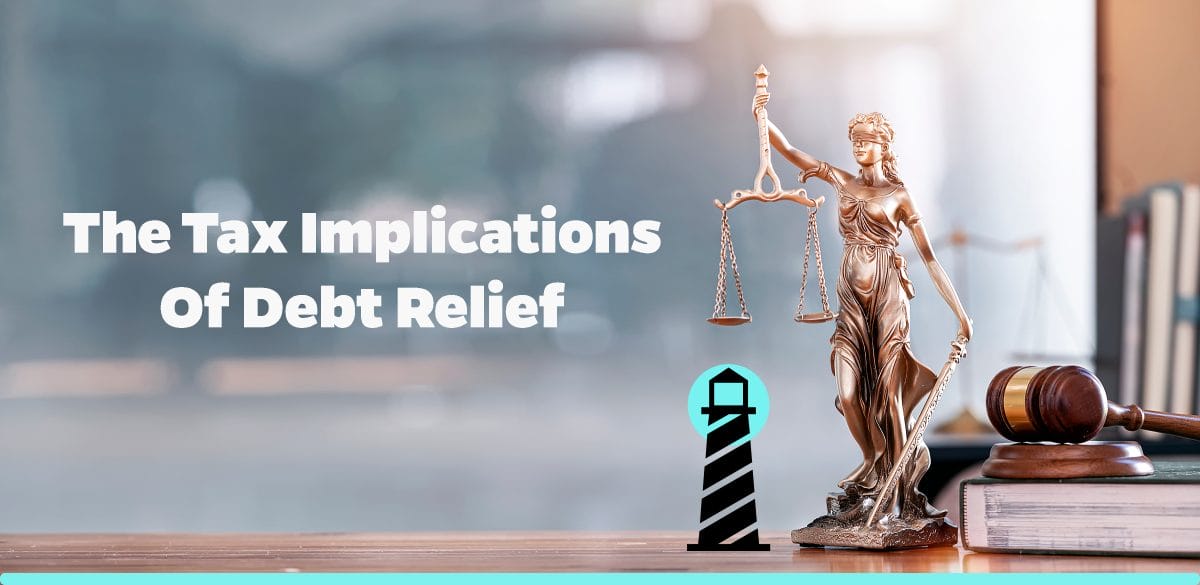The Leverage of Debt Relief on Your Taxes
The cloud of debt can hang heavy over anyone, casting an ever-present shadow. Finding relief from that financial burden can be an incredibly liberating experience. One method some people use is debt relief or debt settlement. This involves paying off a portion of your debts, removing the pressure and stress caused by the looming obligation. While this provides immediate relief, it’s also essential to understand the tax implications that come with it. When considering debt relief, one must be aware of and prepared for the potential ramifications that the decision may have on their tax situation.
Understanding How the IRS Views Debt Forgiveness
In the eyes of the IRS, any debt that is forgiven or canceled by a lender is considered income. This is because when you originally took out the loan, the money wasn’t counted as taxable since there was an expectation you would repay it. If the obligation to repay is removed through a debt relief process such as debt cancellation or forgiveness, the IRS then regards these funds as income to you, and hence, taxable.
This principle is encapsulated in the doctrine of the IRS Debt Relief Tax.
Distinguishing Canceled Debt from Income
One aspect of the debt relief tax that often proves confusing for many is distinguishing canceled debt from income. To clarify, canceled debt constitutes the debt you’re not required to pay back to your creditor. The creditor, usually, will issue a Form 1099-C, Cancellation of Debt, which details the amount of debt forgiven and the date of cancellation.
When you receive a Form 1099-C, it’s imperative to include the amount on your taxable income. Without proper documentation and recording, you could end up paying more in penalties and interest for underreported income.
The Potential Tax Burden
While debt relief companies like Brightside Tax Relief work hard to help individuals and businesses find financial freedom, the IRS will step in at tax time. The moment you settle or forgive any debt, you must report it as taxable income. The added earnings could lead to an unexpectedly high tax bill and put you into a higher tax bracket.
Exceptions and Exclusions
There are specific circumstances under which the IRS allows exceptions and exclusions, thereby excluding the forgiven debt from your taxable income.
1. Certain student loan forgiveness programs
2. Bankruptcy: Debts discharged through bankruptcy are not considered taxable income.
3. Insolvency: If you are insolvent (your liabilities exceed your assets) when the debt is forgiven, some or all of your debt might not be taxable.
4. Farm, business and real estate debts: Under certain conditions, you might be able to exclude debt canceled due to losses in these areas.
5. Mortgage Forgiveness Debt Relief Act: This provides tax relief for homeowners who lost their property through foreclosure or negotiated a reduction in their mortgage principal.
The Importance of Professional Guidance
Given the complexity of tax laws and the potential implications of missteps in managing your potential tax liabilities, seeking professional help is beneficial. Dedicated organizations like Brightside Tax Relief are equipped with the knowledge and experience to guide you through your debt relief journey and its tax implications – making sure you’re compliant with IRS rules while pursuing a path towards financial freedom.
Taking Full Charge
In conclusion, while the immediate relief of settling or cancelling some of your debt is a welcome respite, it does come with tax implications. It pays to be well-informed about how the IRS views your forgiven debt and what portion of it becomes your taxable income. Understanding these intricacies and securing professional guidance can help ensure that you’re not exchanging one financial burden for another.
Stay vigilant, stay informed, and ensure you’re fully aware of the broader financial picture as you make strides towards financial liberation. After all, knowing is half the battle when it comes to managing your debt relief tax implications.




